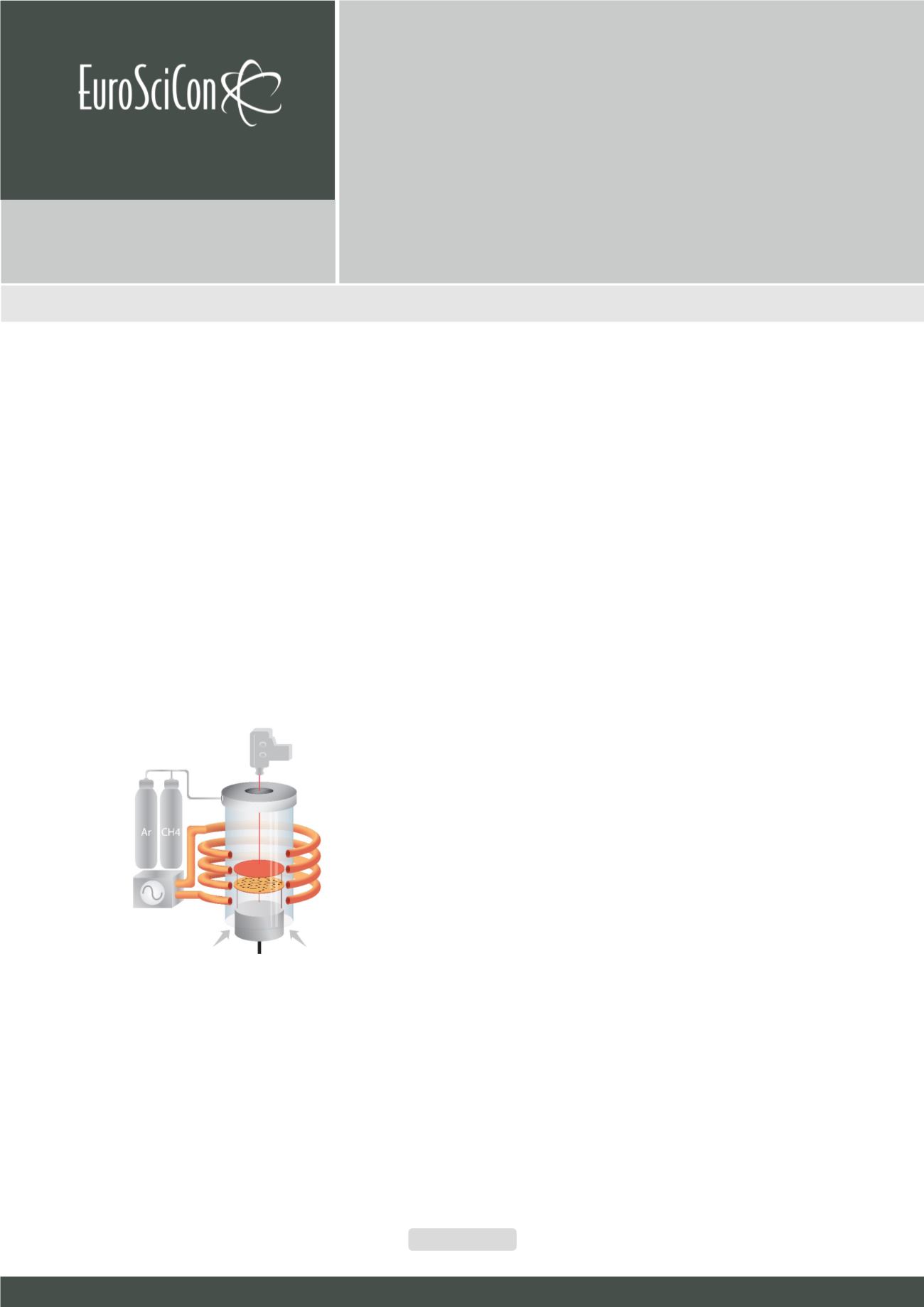

Page 109
Nano Research & Applications
ISSN 2471-9838
E u r o S c i C o n C o n f e r e n c e o n
Nanotechnology &
Smart Materials
O c t o b e r 0 4 - 0 6 , 2 0 1 8
Am s t e r d a m , N e t h e r l a n d s
Nanotechnology & Smart Materials 2018
Vacuum-free and hydrogen-free graphene synthesis
P Häberle
1
, C Orellana
1
, T Cunha
2
, C Fantini
2
and A Jaques
1
1
Universidad Técnica Federico Santa María, Chile
2
Universidade Federal de Minas Gerais (UFMG), Brazil
A
modified method to grow graphene in a single-step process is proposed. It is based on chemical vapour deposition (CVD)
and considers the use of methane as carbon source. Synthesis takes place in an open chamber without requiring the
addition of gaseous hydrogen in any of the synthesis stages. The synthesis occurs between two parallel Cu plates, heated up
via electromagnetic induction. The inductive heating yields a strong thermal gradient between the catalytic substrates and the
surrounding environment, promoting the enrichment of hydrogen, generated as methane fragments, within the volume confined
by the Cu foils. This induced density gradient is due to thermo diffusion, also known as the Soret effect. Hydrogen and other
low mass molecular fractions produced during the synthesis process inhibit the oxidative effects and simultaneously reduce
the native oxide on the Cu surface. As a result, high quality graphene is obtained, only on the inner surfaces of the Cu sheets, as
confirmed by Raman Spectroscopy.
Patricio.haberle@usm.clNano Res Appl Volume:4
DOI: 10.21767/2471-9838-C6-025
















